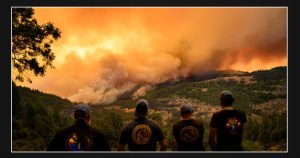Arizona’s sunny weather, scenic landscapes, and diverse culture make it a popular destination. However, not all cities in the state offer the same level of appeal to residents and visitors. Several cities are grappling with significant challenges, including high crime rates, a low quality of life, inadequate infrastructure, and environmental problems. Let’s take a closer look at seven Arizona cities that people are eager to leave behind.
Arizona Cities Facing Challenges and Exodus
| City | Key Challenges | Reasons for Exodus |
| Phoenix | High crime rate, extreme heat, air pollution, traffic congestion, water scarcity | Uncomfortable living conditions, safety concerns, economic disadvantages |
| Tucson | Low income, poverty, poor performance in education, health, and economy, climate change-related issues | Lack of economic opportunities, low quality of life |
| Yuma | High unemployment, high cost of living, extreme heat and dryness | Limited job opportunities, high expenses, harsh climate |
| Kingman | Low income, low housing value, high crime rate | Lack of economic prosperity, safety concerns |
| Sierra Vista | Slow population growth, below-average income, high cost of living | Stagnant economy, limited opportunities |
| Bullhead City | Low income, poverty, high crime rate | Financial struggles, safety concerns |
| Show Low | Isolation, limited opportunities, low income, low housing value | Lack of economic and social opportunities |
1. Phoenix
Phoenix, Arizona, may be the capital and largest city of the state, but it’s not exactly the most desirable place to call home. In fact, it has gained quite a reputation for being one of the top 10 most dangerous cities in the US due to its high crime rate. That’s not the only downside, though. Phoenix is also plagued by extreme heat, air pollution, traffic congestion, and water scarcity. In fact, it holds the unfortunate title of being one of the fastest-warming cities in the country, with an average temperature increase of 4.3°F since 1970. And the future looks even bleaker, as the city is expected to face more frequent and severe heat waves, droughts, and wildfires.
2. Tucson
Tucson, the second-largest city in Arizona and the proud home of the University of Arizona, is unfortunately experiencing a significant exodus. This is primarily due to its low median household income of $41,625, which falls far below the national average of $62,843. Additionally, the city faces a distressing poverty rate of 24.9%, surpassing the national average of 13.4%. According to the US News & World Report, Tucson’s performance in areas such as education, health, and economy is less than stellar. To compound matters, Tucson is also susceptible to the adverse effects of climate change, including heat stress, water shortages, and flooding.
3. Yuma
Yuma, a city in southwestern Arizona, near the border with Mexico and California, has gained recognition for its agricultural production, particularly lettuce, as well as its military presence. However, it is also a city that many individuals are avoiding or seeking to escape. Yuma’s unemployment rate stands at a high 15.9%, surpassing the national average of 6.0%. Additionally, the cost of living in Yuma is relatively steep, with a median home value of $173,900, compared to the national average of $217,500. Moreover, Yuma ranks among the hottest and driest cities in the US, boasting an average annual temperature of 75.3°F and a mere average annual precipitation of 3.3 inches.
4. Kingman
Kingman, located in northwestern Arizona and situated along the historic Route 66, serves as a gateway to the breathtaking Grand Canyon and other captivating natural attractions. Unfortunately, despite its scenic charm, many residents are opting to leave Kingman in search of better opportunities elsewhere. The city struggles with a low median household income of $38,016, which falls significantly below the national average of $62,843. Similarly, Kingman’s median home value lags behind the national average of $217,500, standing at $147,800. Furthermore, the city harbors a high crime rate, with a violent crime rate of 507.8 per 100,000 inhabitants, surpassing the national average of 366.7.
5. Sierra Vista
Sierra Vista, located in southeastern Arizona near the Mexican border, serves as the bustling commercial and cultural center of Cochise County. Fort Huachuca, a significant military installation, is also situated here. However, despite its prominence, Sierra Vista is witnessing a decline in popularity and growth. The city’s population growth rate stands at a low -0.2%, falling short of the national average of 0.6%. Additionally, Sierra Vista struggles with a below-average median household income of $44,631, as compared to the national average of $62,843. The cost of living in Sierra Vista is comparatively high, with a median home value of $189,400, whereas the national average is $217,500.
6. Bullhead City
Bullhead City, located in western Arizona along the Colorado River, is a popular destination for boating, fishing, and gambling, as it sits just across the river from Laughlin, Nevada. However, despite its attractions, the city is experiencing a significant exodus of residents due to its low quality of life and high crime rate. With a median household income of $37,814, well below the national average of $62,843, and a poverty rate of 20.4%, compared to the national average of 13.4%, Bullhead City struggles to provide economic opportunities for its residents. Additionally, the city has a high crime rate, with a violent crime rate of 724.6 per 100,000 people, far exceeding the national average of 366.7.
7. Show Low
Show Low, located in the scenic White Mountains of eastern Arizona, is renowned for its abundance of outdoor activities such as skiing, hiking, and camping. Its cooler climate and higher precipitation levels make it a sought-after destination for nature enthusiasts. Nevertheless, despite its natural charm, Show Low is witnessing a significant exodus of residents due to its isolation and limited opportunities. The city’s median household income of $40,718 falls well below the national average of $62,843, while the median home value of $158,900 is also considerably lower than the national average of $217,500. Additionally, Show Low’s population growth rate of 0.1% lags behind the national average of 0.6%.



